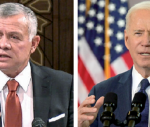You are here
The Russian model for minority rights
Feb 16,2019 - Last updated at Feb 16,2019
What is the best and most functional model for countries with sizable minority groups — ethnic, religious or whatever — to address their rights? The Russian Federation has its own model and could be the most viable of them all, since it draws an equitable balance between self-rule for minorities and the preservation of the territorial and political integrity of the country as a whole.
The Russian model is not “copied” everywhere in the world. There are countries, notably France, that do not admit or recognise that it has minorities within its borders, as it views all citizens as French, regardless of their ethnicity, national origin or religious or racial affiliations. The concept of an all-inclusive citizenship also sounds right in contemporary times because it avoids splitting its people into fractious groups of people and promotes national unity. On the other side of the spectrum there are countries which have sizable minority groups, either ethnic, religious or national, which they do not even recognise their existence. The absence of a functional model that reconciles national rights with minority rights may spread the seeds for simmering internal conflicts, ready to explode at any moment.
The international guidance on this vexing issue addresses it in a rather vague but disturbing way. The 1948 Universal Declaration of Human Rights does not address this subject in an ironclad, clear manner. The declaration speaks of all human beings as being born free and equal before the law. Yet, the right of self-determination per se is not even mentioned in the declaration! The reason could lie in the proposition that the declaration addresses individual human rights rather than the collective rights of peoples.
The International Covenant on Economic, Social and Cultural Rights and the International Covenant on Civil and Political Rights, however, take a direct aim at the issue of self-determination. Common Article 1 of both covenants says that “all peoples have the right of self-determination”, and that “by virtue of that right, they freely determine their political status and freely pursue their economic, social and cultural development”.
What remains hanging in the balance is the definition of a “people”. Countries may differ on whether the minorities that exist within their borders are a “people” in the context of international human rights jurisprudence. The rule of thumb is that a “sizable” ethnic, religious, national or racial group of people occupying a certain geographic area in any given country may, indeed, constitute a people for the purposes on international human rights jurisprudence.
The Palestinian people in Israel, concentrated in the north of the country and numbering well over a million-and-a-half, would easily fall under the category of people. The Kurds in Iraq and Turkey could also qualify as a people. Unlike Israel, however, Turkey regards its Kurdish people as full citizens, with equal political, economic and social rights with those exercised by the Turkish majority people in the country.
In any case, the exercise of the right of self-determination, even by a “people”, need not necessarily lead to the secession of the territory where they are residing from the country in which they coexist. Otherwise, the entire international order could be put into jeopardy, as many nations would qualify for division along an ethnic, racial, religious or national-origin basis. Chaos could, indeed, ensue in the world.
Under the prevailing conditions, the Russian model could be the most viable way to reconcile national territorial integrity with the right of self-determination.













